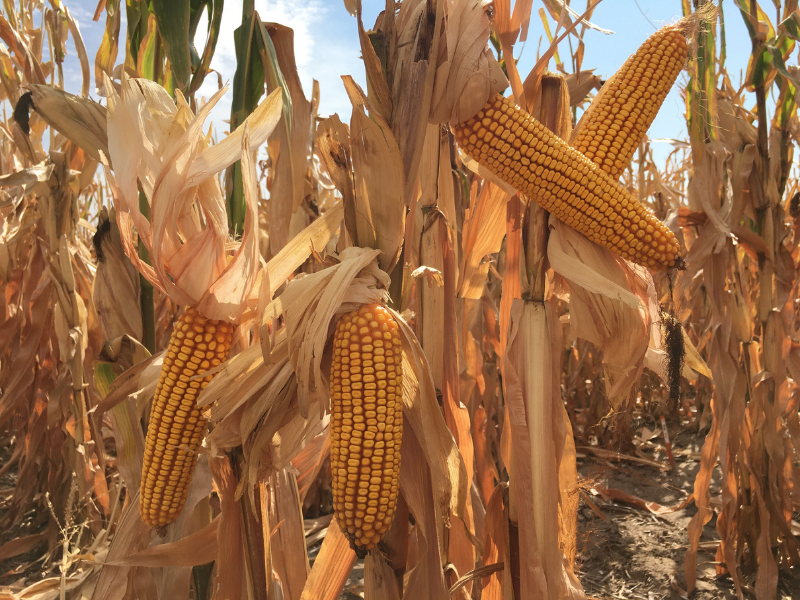USA
June 7, 2022
Corn tillers have a negative reputation with farmers and agronomists around the world. The June 7th 2022 Sustainable, Secure Food Blog explains that this bad reputation may not be deserved.

This single corn plant has four ears of corn at harvest time. Two grew on tillers – a few more than the typical single primary ear! This plant is part of a study investigating the effect of tillers on corn grain yields at Kansas State University. Credit: Rachel Veenstra.
According to blogger Rachel Veenstra, corn is a type of grass. “Tillers are a type of branching structure found in grasses and other species like alfalfa,” she says. “For example, grass tillers are the reason your lawn fills in after seeding.”
Uniformity of plant structure and grain production was one of a plant breeder’s goals when creating crop species for more intense management. Tiller growth went against this goal in corn. So, corn breeders suppressed the tillering trait over time.
Corn tillers have been given the nickname “suckers.” This moniker assumes that these tillers steal water, nutrients, and energy resources from grain developing on the primary ear of corn. The primary ear is the dominant grain development site on a corn plant, and typically the only one.
This single ear of corn is the main “product” of corn plants. Grain from these ears is the product sold by the farmer. (Silage – chopped up ears, stalks, and leaves – is another product, but usually not the primary one.)
If tillers are growing, the corn plant is dividing energy. That energy could otherwise be fully dedicated to adding more, larger grains to the primary ear. This observation led to the assumption that grain production from the corn plant as a whole is reduced when tillers are present.
Our research at Kansas State University suggests otherwise!
Our work is focused on corn tiller development and grain yield impacts. Research on corn tillers is scarce, and modern conclusions are unavailable. To fill this gap, our team tested the impacts of tiller growth on final corn yields for three different years in fields across the state of Kansas.
Regardless of management practices or climate, the presence of tillers in corn never reduced yields in any of our trials. That is, we have concluded that the “sucker” assumption is not valid.
To read the entire blog, visit: https://sustainable-secure-food-blog.com/2022/06/07/what-are-corn-tillers/